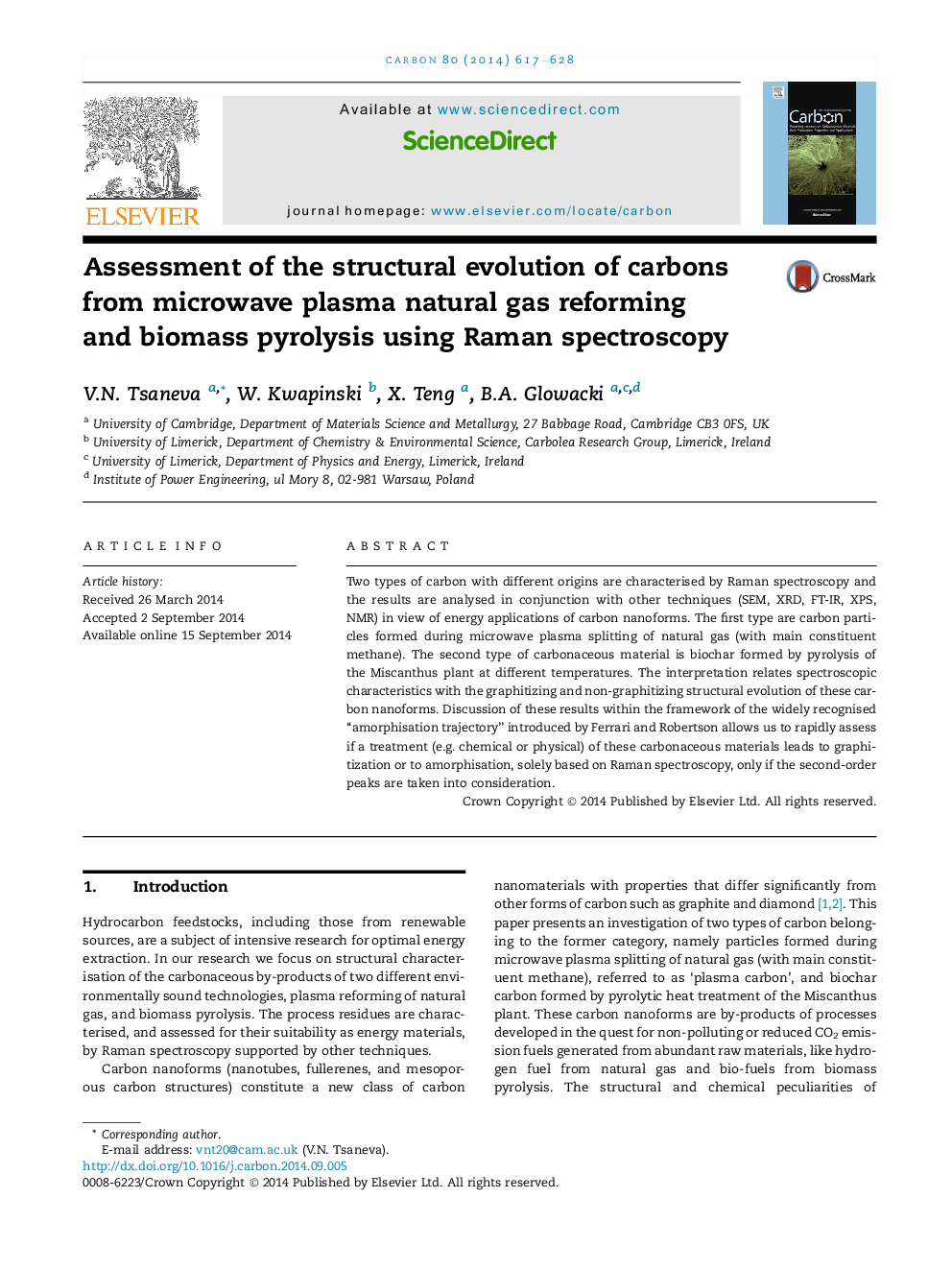| Article ID | Journal | Published Year | Pages | File Type |
|---|---|---|---|---|
| 1413761 | Carbon | 2014 | 12 Pages |
Two types of carbon with different origins are characterised by Raman spectroscopy and the results are analysed in conjunction with other techniques (SEM, XRD, FT-IR, XPS, NMR) in view of energy applications of carbon nanoforms. The first type are carbon particles formed during microwave plasma splitting of natural gas (with main constituent methane). The second type of carbonaceous material is biochar formed by pyrolysis of the Miscanthus plant at different temperatures. The interpretation relates spectroscopic characteristics with the graphitizing and non-graphitizing structural evolution of these carbon nanoforms. Discussion of these results within the framework of the widely recognised “amorphisation trajectory” introduced by Ferrari and Robertson allows us to rapidly assess if a treatment (e.g. chemical or physical) of these carbonaceous materials leads to graphitization or to amorphisation, solely based on Raman spectroscopy, only if the second-order peaks are taken into consideration.
